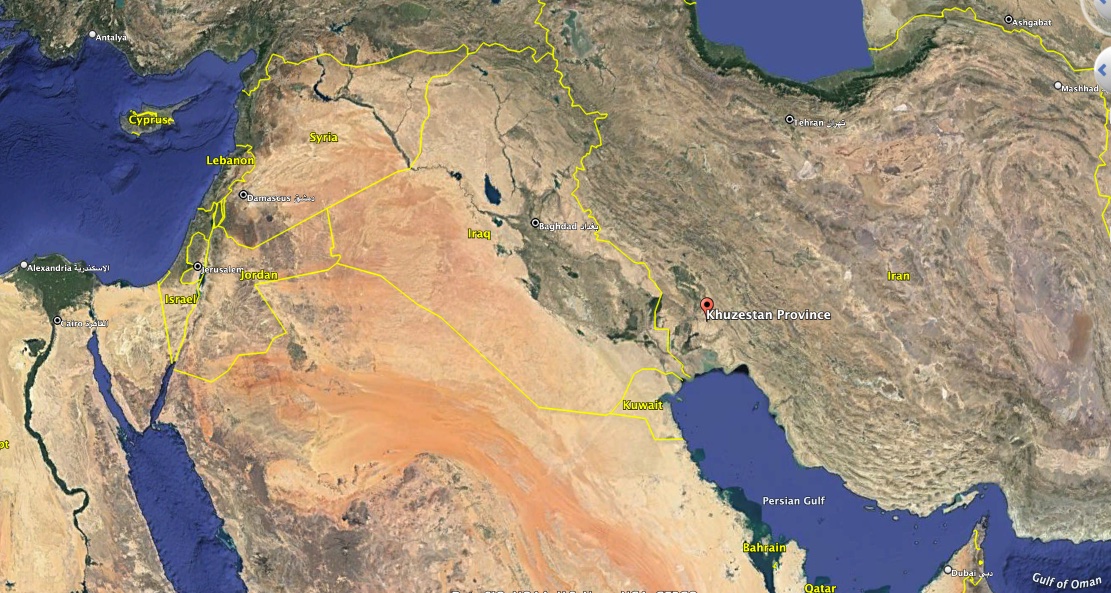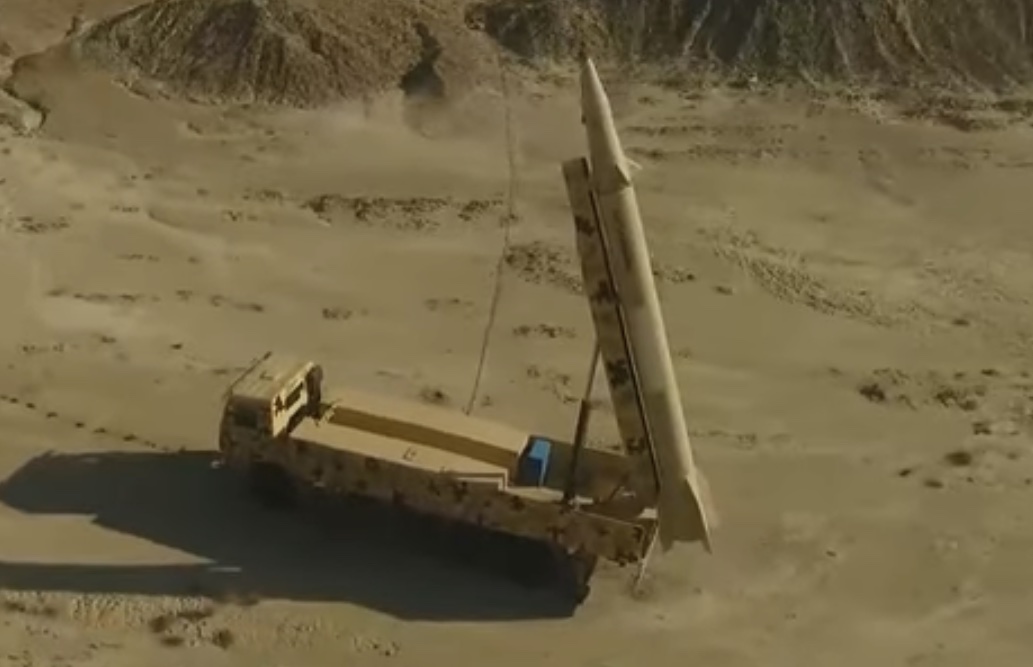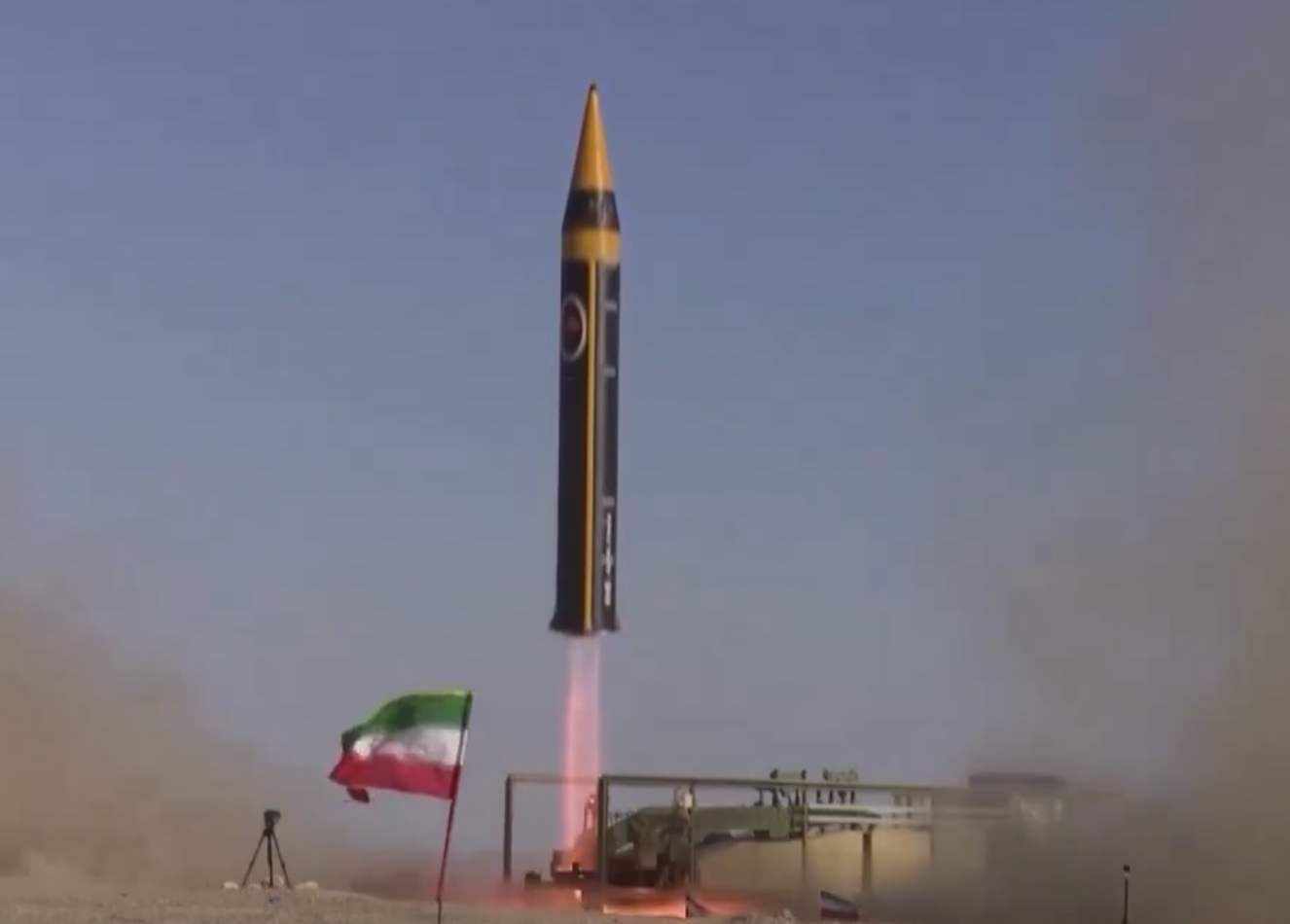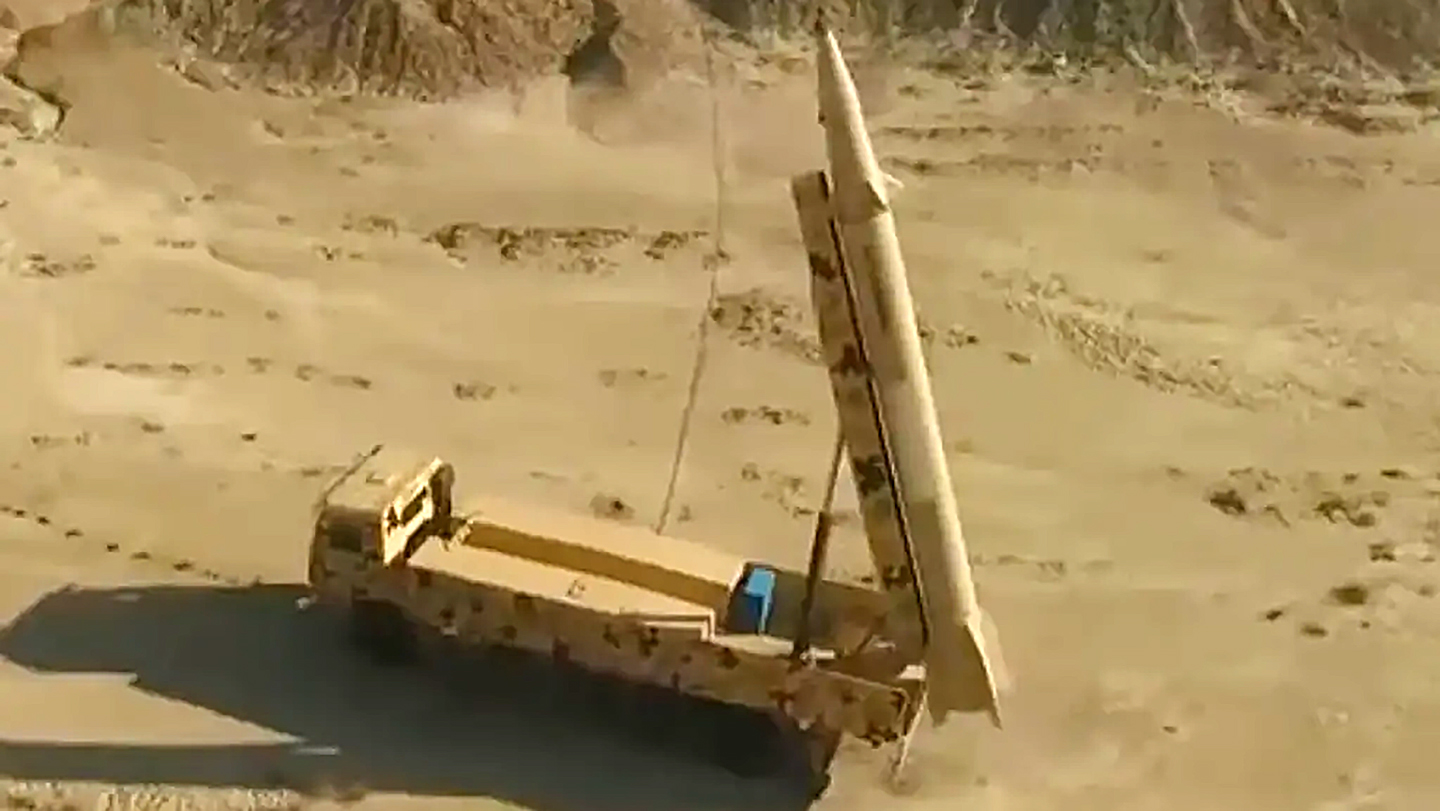Iran used its new Kheiber Shekan medium-range ballistic missile (MRBM) for the first time Monday when it struck what it claimed was a “terrorist facility” in Syria’s Idlib province. The attack was one of three Iran carried out in three countries over the past two days. Iran also attacked what it claimed was an Israeli Mossad facility in Erbil on Monday and what it claimed were “terrorist” sites in an unprecedented attack in Pakistan on Tuesday. While they all seem to have had their own objectives, they clearly serve as a timely demonstration of Iran’s ability to execute precision ballistic missile strikes close to and far beyond its borders.
The Islamic Revolutionary Guards Corps Aerospace Force (IRGC-AF) launched four Kheiber Shekan MRBMs from its facility in the southern parts of Iran’s Khuzestan Province on Monday, said Brig. Gen. Amir Ali Hajizadeh, according to the official Iranian Tasnim news agency. That’s a distance of about 800 miles.
The strike is considered the longest ever by an Iranian ballistic missile.
The IRGC-AF also launched four other missiles from its Kermanshah facility and seven missiles from the West Azarbaijan Province at Erbil on Monday, Hajizadeh said. He added that they were targeting “the base of Zionists in the Kurdistan Region of Iraq” though Iraqi officials dispute that assertion. Hajizadeh did not specify what kind of missiles were fired in those attacks. Kermanshah is about 200 miles from Erbil and West Azarbaijan Province about 100 miles.
Iraq meanwhile filed a complaint against Iran at the U.N. Security Council.
Monday’s attacks were significant for several reasons, Behnam Ben Taleblu, a senior fellow with the Foundation for Defense of Democracies (FDD) think tank, told The War Zone.
“There were two historic firsts,” said Taleblu, an expert in Iranian missile technology. “It was the first military use of the Kheibar Shekan MRBM and it was the first time Iran targeted two territories in two different nations in the same operation.” It was also the first launch from the IRGC-AF base in Khuzestan Province since the Iraq-Iran war, he added.

The Kheibar Shekan is a two-stage, solid-propellant, truck-launched MRBM that Iran first unveiled on Feb. 9, 2022. A third generation of the Fateh family of ballistic missiles, Iran claims it has a maximum range of 1,450 kilometers (900 miles).
“Dubbed the ‘Breaker of Kheibar, in reference to early Muslim conquests of a Jewish castle in Arabia, the Kheibar Shekan is Iran’s second attempt at producing an MRBM from the Fateh- family (with the Shahid Haj Qassem being the first),” Talebu wrote in a February 2023 monograph. “With a reported range of 1,450 kilometers and a separating warhead, the Kheibar Shekan is Iran’s most advanced solid-propellant system outside the Sejjil, which was Iran’s first solid-propellant MRBM.”

During its unveiling, Hajizadeh said the weight of the new missile has been reduced by a third and it is six times quicker to launch, without identifying the type he was comparing it against, Jane’s reported at the time. “He also said the missile is highly maneuverable in its terminal phase and that its warhead uses an explosive that is far more powerful than TNT.”
He did not specify the weight of the warhead or which explosive. It is unknown what type of guidance system the weapon has but inertial navigation with embedded GPS is a given.


Taleblu said Iran served several purposes in launching the Kheiber Shekans.
They were testing the range of the missile while at the same time serving notice on Israel that it could hit targets there, he said. Iran was also sending a reminder that it remains an active participant in the ongoing conflict in Syria.
In addition to attacking targets in Iraq and Syria, “two key strongholds of the Jaysh al-Dhulm (Jeysh al-Adl) terrorist group in Pakistan” were struck on Tuesday, Tasnim reported. The sites “have been obliterated through precision missile and drone strikes.”
The focal point of this operation “was the region known as Kouh-Sabz (green mountain) in the Balochistan province of Pakistan, recognized as one of the largest hubs for the Jeysh al-Dhulm militants,” Tasnim reported. Jaish al Adl has previously mounted attacks on Iranian security forces in the border area with Pakistan.
The publication did not specify what types of drones or missiles were used in the attack. Nor did it say who carried out the attack, but Press TV, the English-language arm of Iranian state television, attributed the attack to Iran’s paramilitary Revolutionary Guard, according to The Associated Press.
Pakistan’s Foreign Affairs Ministry also blamed Iran, issuing a sharp rebuke of the attacks it said killed two children and injured three others.
“Pakistan strongly condemns the unprovoked violation of its airspace by Iran which resulted in death of two innocent children while injuring three girls,” the statement read. “This violation of Pakistan’s sovereignty is completely unacceptable and can have serious consequences.”
While it is unclear what missiles Iran used to attack Pakistan, there is no mistaking that it has developed a large arsenal of short- and medium-range ballistic missiles.
The potential of Iranian-made ballistic missiles to cause significant destruction is in little doubt, with multiple instances of them having been employed in combat. In the last couple of years, such incidents have included the January 2020 attack against Al Asad Air Base in Iraq, which made use of a Qiam series short-range ballistic missile (SRBM), and the March 2022 attack on Erbil in Iraq, which used Fateh-110 SRBMs. These weapons hit very hard with an impressive degree of accuracy.
We do not know what, if any response nuclear-armed Pakistan will take yet. Clearly though, three Iranian missile attacks in three different countries over two days serve as a glaring deterrant and raises tensions in a regional already roiling over the ongoing Israel-Hamas war, Houthi attacks on shipping and Iranian-backed militia attacks on U.S. facilities in Iraq and Syria.
We will continue to monitor this situation and update when warranted.
Contact the author: howard@thewarzone.com
